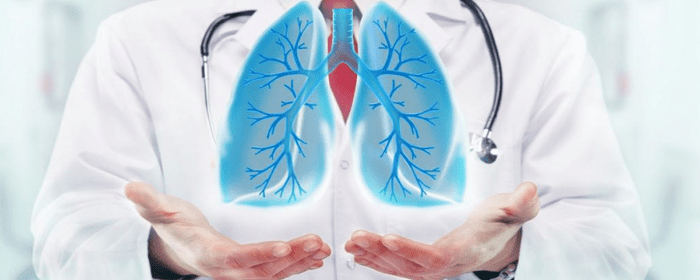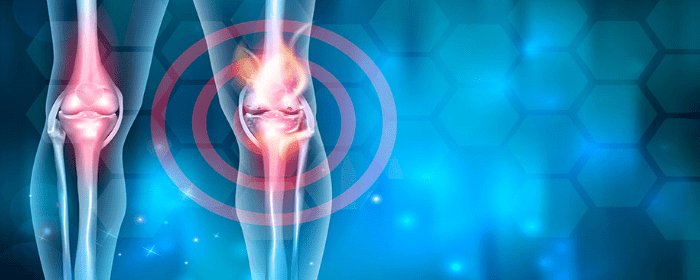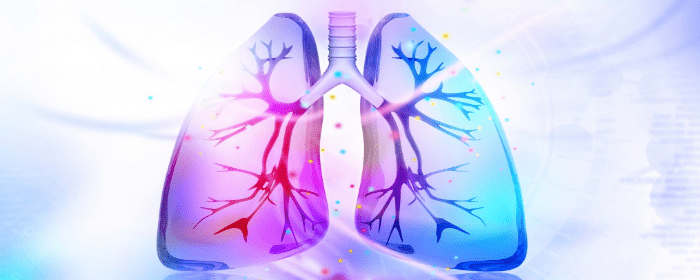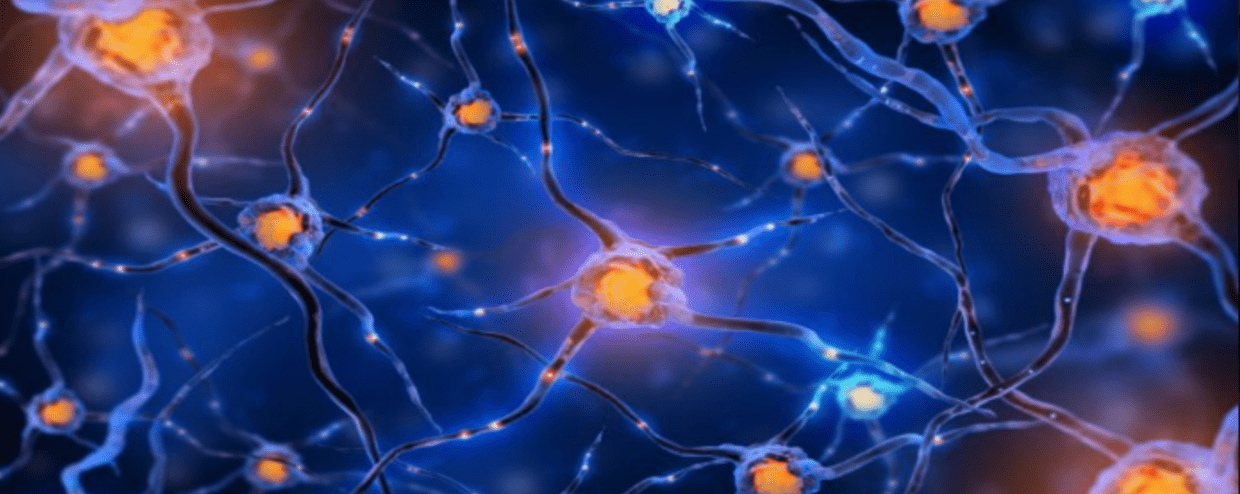
by admin | Nov 12, 2020 | COPD, Stem Cell Therapy
Several recent studies have shown that adult stem cells, and specifically mesenchymal stem cells (MSC), appear to support the regeneration and protection of lung tissue, making them a very promising potential next-generation therapy option for the treatment of COPD.
Known treatments for COPD are designed to address symptoms and not the actual cause of the condition; considering that COPD continues to be among the leading causes of death among developed countries and that it’s considered to be a preventable and treatable disease there is a clear and compelling need to develop more effective therapeutic strategies.
As COPD develops, its inflammatory properties are characterized by the death of the epithelial cells, loss of the terminal air-space within the lung, and ongoing breakdown of lung tissue responsible for stability, elastic recoil, and other physiological functions essential for respiration.
Since the damage to these cells is permanent and not repairable, researchers continue to explore the use of MSCs as a potential option to repair and restore lung structure and lung function in people living with COPD.
Currently, any therapeutic-based COPD treatment option relies on the continued use of bronchodilators and/or corticosteroids to reduce the symptoms of COPD. While both of these drugs have been able to slow the worsening of COPD symptoms, the benefits appear to be ineffective as a long-term treatment option for even mild to moderate COPD.
Because of their capacity to induce growth of skeletal muscle cells, blood, fat, vascular systems, and connective tissues throughout the body, and since they seemingly have a capacity for self-renewal, MSCs are now being considered as a therapeutic treatment option for COPD.
In addition to their versatility throughout various cells, tissues, and systems, MSCs are relatively simple to isolate, they expand with high efficiency, are easily able to be processed and transported from the lab setting to point-of-use, and are highly compatible with different delivery methods and formulations currently being used by medical professionals.
Early research has also demonstrated that MSCs possess powerful immunosuppressive properties and are easily able to seek out and migrate to specific sites of tissue injury; this appears to be especially promising in the tissue of the lungs where not only have MSCs demonstrated the ability to suppress inflammation and growth factor production but also been found to reduce fluid retention within the lungs.
While these findings are promising, Phase II clinical trials to establish the use of Mesenchymal stem cells as a therapeutic treatment in patients with severe COPD are currently ongoing. Specifically, this trial is examining how effective MSCs derived from normal healthy adult donors in the treatment of COPD.
Although further study is required, early indications show promise that stem cell therapy, and specifically the use of MSCs, could be a very effective therapeutic treatment option in patients with moderate to severe COPD.
Reference: (n.d.). Mesenchymal stem cell therapy for the treatment of … – PubMed. Retrieved November 25, 2020, from https://pubmed.ncbi.nlm.nih.gov/20384521

by admin | Nov 11, 2020 | Pulmonary Fibrosis, Mesenchymal Stem Cells, Stem Cell Therapy
Idiopathic pulmonary fibrosis (IPF) is a chronic and progressive disease of the lungs that causes fibrosis of the spaces between the air sacs. As the fibrosis gets progressively worse, the movement of the lungs is more and more restricted. In effect, patients with IPF find it harder and harder to breathe. Patients become short of breath almost constantly.
The “idiopathic” part of idiopathic pulmonary fibrosis means that the cause is unknown. We know that it mainly occurs in older people, usually to people between the ages of 55 and 75—but we don’t know why.
Eventually, most people with IPF will need supplemental oxygen for all activities. Supplemental oxygen may delay some of the consequences of IPF (e.g. pulmonary hypertension), but it is mostly used to help patients breathe more easily and get more oxygen into the blood.
Two antifibrotic drugs, nintedanib, and pirfenidone are approved for the treatment of patients with idiopathic pulmonary fibrosis. In some patients with mild to moderate disease, these drugs can delay the progression of IPF for weeks to months. Both drugs are associated with significant side effects and patients may stop taking them because of these adverse events. Even if patients can tolerate the drugs, they do not repair or rebuild lung tissue, so they only help to slow the progression.
Scientists have suggested an alternate approach; one in which an antifibrotic drug is given alongside a treatment intended to regenerate the lung tissue, namely, mesenchymal stem cells. They persuasively argue that mesenchymal stem cells can regulate the immune system by reducing the inflammation that occurs in idiopathic pulmonary fibrosis. Stem cells also differentiate into functional alveolar cells, i.e., the cells that are part of air sacs. Perhaps more impressively, bone marrow-derived stem cells had the same short-term therapeutic benefits as pirfenidone in mice with experimental IPF.
The authors do not advocate that stem cells should be used to replace the antifibrotic drugs, nintedanib, and pirfenidone, but they do suggest that stem cell treatment could be useful in combination with one of these drugs. They theorize that the antifibrotic drug can reduce symptoms, but the stem cell treatment may help also reduce symptoms but also slow down, stop, or even reverse the progression of the disease. More clinical work is needed, but since IPF is a terrible disease with no cure, that work will hopefully be done quite soon.
Reference: Chuang, Hong-Meng, et al. (2018). Mesenchymal Stem Cell Therapy of Pulmonary Fibrosis Improvement with Target Combination. Cell Transplantation. 2018; Vol. 27(11) 1581-1587.

by Stemedix | Nov 8, 2020 | Stem Cell Therapy
More than one in seven U.S. adults is believed to have chronic kidney disease — or, roughly 15% of the population (37 million individuals). When they’re functioning properly, the kidneys remove waste from the body as well as excess fluids. In the case of patients with kidney disease, these organs become compromised and lose their ability to filter waste.
In its earliest stages, kidney disease may not present any symptoms. Over time, however, waste builds up in the blood and can lead to compounding issues, such as anemia, increased risk of heart disease, and nerve damage. When the kidneys fail, a patient must receive dialysis or a kidney transplant.
Dialysis is time-consuming and expensive. Typically, the treatment ranges in cost from $53,000 to $72,000 per year. And a kidney transplant – when a match is available – can total $400,000. Recently, however, researchers have begun exploring the potential of stem cell therapy to help kidney disease patients.
While there are several potential root causes for kidney disease, one of the most common is diabetes. In fact, 75% of patients, diabetes, or high blood pressure were the primary diagnoses, and nearly half of all patients in end-stage kidney disease have diabetes.
Treating diabetic kidney disease is challenging, because not only does the condition affect the kidneys, but it also causes systemic issues throughout the body. The condition is sometimes treated by controlling blood pressure through specific drugs, but medications for addressing the other challenges associated with diabetic kidney disease haven’t shown strong results.
Stem Cell Therapy for Kidney Disease
Regenerative Medicine, also known as stem cell therapy, has potential for those battling kidney disease. These powerful cells have anti-inflammatory properties, and can therefore help to control the widespread inflammation that takes place in diabetic kidney disease. When inflammation is controlled, the regeneration process can begin, helping to create healthy tissue and promote normal kidney functioning. Mesenchymal stem cells, in particular, appear to be especially promising for managing symptoms of kidney disease, according to early research. These cells are easily accessible and have powerful abilities to control inflammation. Clinical trials to test the efficacy of stem cells for kidney disease are ongoing. Researchers aim to understand the precise ways in which stem cells could benefit kidney disease patients, which will help inform treatment protocols. Although stem cell therapy is not a cure for kidney disease, it’s possible to help manage symptoms and may have the ability to reduce the frequency of dialysis sessions, which can ease the financial burden and time commitment for patients. Further research is needed, but some initial studies of stem cells for kidney disease shows promise in the regenerative medicine field. Contact a Care Coordinator today for a free assessment!

by admin | Nov 7, 2020 | Osteoarthritis, Mesenchymal Stem Cells, Stem Cell Research, Stem Cell Therapy
Osteoarthritis is the most common form of arthritis. In osteoarthritis, the cartilage of the joints breaks down, bone spurs form, the synovial linings become inflamed, and the ligaments around the joint calcify. All of these pathological changes combine to cause joint pain, swelling, and stiffness. The breakdown of the joint also means that it does not function properly. The arthritic joint may “lock up,” “give out,” or simply not be able to move through its normal range of motion. Early in the disease, the pain of osteoarthritis may be brought on by movement. Later, the pain is more or less constant with severe pain flares.
Initially, the treatment for osteoarthritis is pain medications, exercise, braces, and physical therapy. Joint injections may be helpful for 4 to 6 weeks, but recent research suggests that repeated steroid injections may break down cartilage and speed up joint destruction. Unlike treatments for rheumatoid arthritis, there are no disease-modifying treatments for osteoarthritis. The disease tends to get worse over time until surgery is required. Joint replacement surgery is usually the treatment of last resort.
Since osteoarthritis is a degenerative joint disease, a reasonable approach to therapy is to try to rebuild or regenerate the joint tissues. This would not only stop the disease progression of osteoarthritis but perhaps even heal the damaged joint. For this reason, regenerative medicine, also known as stem cell therapy, is drawing the attention of many scientists who are looking for alternative therapeutic treatments for osteoarthritis.
Researchers tested the ability of mesenchymal stem cells to relieve pain and treat the damage of osteoarthritis. More specifically, they used the exosomes that the mesenchymal stem cells produce. Exosomes are tiny packets of substances like RNA and peptides that support tissue growth and repair. Exosomes contain most of the molecules that make mesenchymal stem cells helpful.
The scientists found that giving exosomes from mesenchymal stem cells to animal subjects with experimental osteoarthritis had some remarkable effects. Not only did the stem cell-derived treatment substantially reduce pain in the rats with osteoarthritis, but microscopic and molecular evidence also showed that the exosomes were able to repair cartilage in the affected joints. This is truly impressive when you consider that other treatments for osteoarthritis only reduce symptoms—they do not repair cartilage or stop the progression of the disease.
While this work will need to be replicated in human clinical studies (and that work has already begun), this is an exciting finding for the millions of Americans who struggle with osteoarthritis.
Reference: He, L., He, T., Xing, J. et al. Bone marrow mesenchymal stem cell-derived exosomes protect cartilage damage and relieve knee osteoarthritis pain in a rat model of osteoarthritis. Stem Cell Res Ther 11, 276 (2020). https://doi.org/10.1186/s13287-020-01781-w

by admin | Oct 30, 2020 | COPD, Stem Cell Research, Stem Cell Therapy
Chronic obstructive pulmonary disease (COPD) is a lung condition that makes it hard for patients to breathe. In COPD, small airways in the lungs thicken and lose their elasticity. People with COPD have shortness of breath, especially during physical activity. Patients with severe COPD may experience a more challenging quality of life. COPD patients may experience several exacerbations a year which require a stay in the hospital.
Patients with COPD typically need one or more inhalers a day. These inhalers help to open airways and, in some cases, decrease lung inflammation. Patients who also have bronchiectasis may need to take an oral antibiotic every day. During a COPD exacerbation, patients usually must receive powerful steroid treatments intravenously, routine breathing treatments, and supplemental oxygen.
People with COPD are more prone to lung infections, and so they usually receive IV antibiotics for pneumonia. Those who successfully stop smoking can help to prevent further lung damage, however, the inflammation and lung damage persists for a long time. Today, patients are seeking alternative therapies for COPD. Many are discovering regenerative medicine, also known as stem cell therapy, that may offer an incredibly promising therapy for COPD.
The lungs have a large number of naturally occurring stem cells that can restore function. For example, mice who lose half their lung capacity from experimental COPD survive, and natural stem cells within the lungs can restore their lungs to a natural state within 5 months. Unfortunately, humans with COPD cannot repair their lungs as quickly and as fully as mice can. This is why researchers are studying the use of stem cell treatment to restore lung function in patients with COPD.
Studies have shown that stem cells have the potential to help improve lung function. Stem cell treatment improved oxygen and carbon dioxide exchange, exercise tolerance, and cell injury in early studies.
One review did show that stem cell treatment is “safe and may improve patients’ condition and quality of life; however, larger-scale studies are needed to evaluate efficacy.” More research in humans is needed, but the pre-clinical (aka animal and laboratory) research in this area is quite promising.
Reference: Kokturk N, Yıldırım F, Gülhan PY, Oh YM. Stem cell therapy in chronic obstructive pulmonary disease. How far is it to the clinic?. Am J Stem Cells. 2018;7(3):56-71. Published 2018 Aug 1.

by Stemedix | Oct 26, 2020 | Multiple Sclerosis, Stem Cell Therapy
Multiple sclerosis (MS) is a chronic illness that damages nerves in the brain and spinal cord. In this disease, the body’s immune system mistakenly targets and attacks the myelin in the central nervous system, or the layer of insulation around the nerves. As the autoantibodies target healthy myelin tissue, neurological disabilities ensue. While there is currently no cure for MS nor any means of repairing myelin damage to improve disease progression, results from clinical trials suggest mesenchymal stem cells (MSCs) could be effective in treating nerve damage caused by the condition. So many may be wondering “Can Stem Cells treat neural damage caused by Multiple Sclerosis”.
According to researchers, MSCs can help to control the immune response in people with Multiple Sclerosis. These cells have powerful self-renewal capabilities, in addition to immunomodulatory and neuroregenerative properties. While the precise cellular mechanisms of stem cells in treating Multiple Sclerosis are still being studied, researchers are encouraged by the results of several clinical trials thus far.
For instance, MSCs can be targeted to the brain tissues to reach the sites of damage, including brain lesions, to help improve the survival rate of brain cells. Also administered systemically, these cells have the potential to improve one’s quality of life and severity of symptoms.
Stem cells can be retrieved from various sources, including fat tissue, umbilical cord-derived tissue, and bone marrow aspirate. The mesenchymal stem cells derived from these tissues provide the potential power in improving cognitive function and decreasing disease severity, which is likely due to the cells’ anti-inflammatory and neuroprotective characteristics. The source of cells is determined by a few factors including age, medical history, and patient preference. Results can vary from patient to patient. Their environment factors, diet, and lifestyle choices can play an important part in the outcome. However, studies have shown that stem cell therapy for those whose immune systems have been compromised has the potential to prohibit the progression of MS for up to five years in 70% to 80% of patients. This and other stem cell treatments have the potential to significantly improve treatment outcomes for people with MS. Contact a Care Coordinator today for a free assessment!







 St. Petersburg, Florida
St. Petersburg, Florida
